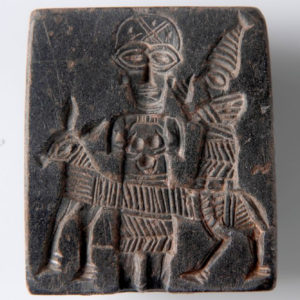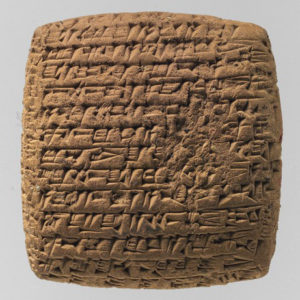Interaction and cultural exchange between Anatolia and Mesopotamia..
 |
 |
This period is also known as the Middle Bronze Age during which the old Assyrian state in Mesopotamia established a trading system with Anatolia. In this period Anatolia was divided into city states ruled by Hattians. The Assyrians established markets out of cities each of which was called “karum”. There were 20 of these karums ruled by one central market, Kanis, located in Kultepe. Thousands of tablets were discovered at Kultepe. The 4000 year old ancient trade tablets of Kültepe have been accepted into the UNESCO Memory of the World.
The gold and silver were the two basic norms for trade, the former for the wholesale and the latter for the retail business. The method of trade was bartering. They paid tax and rent and in return, security was granted by local rulers. Caravans were employed which generally brought tin, perfumes and ornaments in exchange for goods made of silver and gold. The donkey was the main transportation animal.
This period marks a big interaction and cultural exchange between Anatolia and Mesopotamia.
Written history started in Anatolia with the introduction of the Assyrian language, the cuneiform script and the use of cylinder seals by the Assyrian traders..
The figurative symbolism has been one of the most revealing aspects of the finds at Kultepe, because it emphasizes the existence of an authentic and indigenous Anatolian culture persisting through the vicissitudes of migration and political change. A fully developed Anatolian iconography persisted into later centuries, reappearing almost unchanged in the art of the Hittites.
SITE: Kultepe ( Central Anatolian Region) formerly called Kanis, is about 20 km. away from Kayseri. It is 3 km. north of the Sivas road.
MUSEUMS: Findings from the site are exhibited at the local museum of Kultepe excavation site and at the The Museum of Anatolian Civilizations (Ankara)
